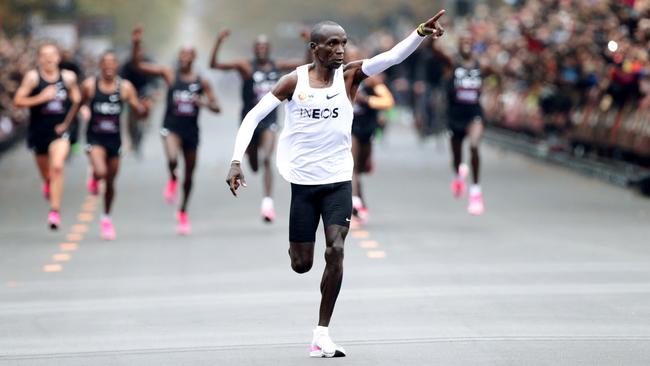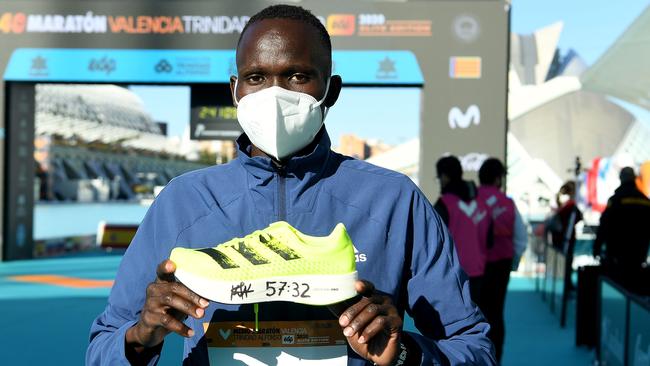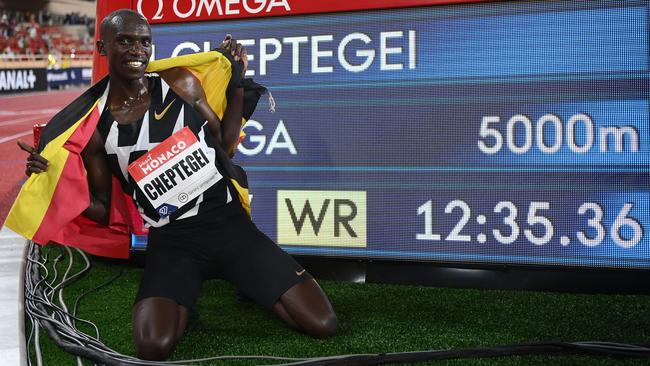Tokyo on track for a supershoe imbroglio
Controversial shoes with chunky heels and built-in carbon-fibre plates will cloud any world record set at the Games.

Of all the stories that could emerge when the athletics gets under way at the Olympic Games this Friday, it seems reasonable to expect at least one footwear-based controversy.
It is a subject that has caused huge debate — not to mention rule changes — in the sport since Rio, after it became known that all three medallists in the men’s marathon there had worn prototypes of the Nike Zoom Vaporfly “supershoe”.
With its chunky heel and built-in carbon-fibre plate, the shoe is designed to boost athletes’ running economy (their efficiency in expending energy) — in simple terms, the shoes are lighter, springier, bouncier. Early independent and Nike-sponsored studies showed that they helped to improve long-distance road-running times by up to 4.2 per cent, while athletes also reported reduced leg soreness.
Nike’s competitors were quickly in on the act. Until last December, no man had broken 58 minutes for the half-marathon. But Kenyan Kibiwott Kandie crossed the line in Valencia in 57min 32sec wearing a pair of Adidas Adios Pros. Three Nike athletes broke 58 minutes that day.
Nike had also set its sights on the track, supplying Uganda’s Joshua Cheptegei with spikes that he wore in demolishing Kenenisa Bekele’s records over 5000m and 10,000m. These remarkable achievements came against a backdrop of increasing disquiet over what the advances in technology represent. For some, they are a form of “mechanical doping”, ripe for comparison with the LZR Racer swimsuit controversy which dominated the 2008 Olympics.
These body-length Speedo swimsuits, designed to compress the body and trap air for buoyancy, were worn by 98 per cent of all swimming medallists in Beijing, but were immediately the subject of widespread concern about their legitimacy, especially when some competitors took to wearing two or more suits in a bid to multiply the benefits. In 2009, Fina, the sport’s governing body, banned all body-length swimsuits, having deemed that they provided an unfair advantage.

With athletics, the footwear imbroglio has an additional layer of complexity; some would say murkiness. Nike sponsors track and field events at every level across the globe and has a $US500m ($678m) deal with USA Track and Field to sponsor the US team until at least 2040. Sebastian Coe, the president of World Athletics and two-times Olympic 1500m champion, was sponsored by Nike between 1978 and 2015.
A more immediate and visceral concern in the athletics community is the prospect of misleading comparisons with previous achievements. Simply, there is a perceived danger of records being broken by inferior athletes with access to cutting-edge technology that was not available in the past and — the thinking goes — should not be allowed in the present.
Conversely, but as importantly, not all athletes here in Tokyo have access to the shoes, and some respond better to them than others: again, it’s a question of basic fairness.
Earlier this year, Nike shelved a “supershoe” for sprinters, after rival manufacturers warned that Usain Bolt’s world records — set over 100m and 200m in Puma spikes — could be wiped out by less talented individuals. The Air Zoom Viperfly is believed to have been tested by American Christian Coleman, who set his 100m personal best of 9.76sec when winning gold at the 2019 World Championships. Coleman was rated the world’s fastest man before his ban last October for missing three drugs tests. He will not be in Tokyo to have a crack at Bolt’s record, which stands at 9.58sec.
It is believed that the Viperfly would not have been approved because of concerns that its spike plate acted as a secondary spring. World Athletics revised its rules last year, banning shoes with soles thicker than 40mm and stating that they must not contain more than one rigid plate or blade of any material.
The height of track spikes has been limited to 25mm for distances of 800m and above and 20mm below that. There have been reports that shoes could be cut open after races at these Games if officials want to check the soles adhere to the rules.

Track spikes have traditionally had wafer-thin soles, but these new thicker, springier versions, deep enough to incorporate a carbon plate or rod, have already seen some freakish results. Two US college students, for example, ran 3min 50sec for the indoor mile (1600m) and suddenly found themselves in the all-time top 10, while in February Britain’s Elliot Giles — wearing the latest Nike shoe — smashed Coe’s British indoor 800m record with the second-fastest indoor time in history. Giles said it was an “insult” to suggest his feat was solely down to the shoes.
Another British athlete, Marc Scott, beat four-times Olympic champion Mo Farah to a spot in the Tokyo 10,000m, and has knocked more than 45 seconds off his previous best. Scott, 27, is part of the Nike-backed Bowerman Track Club in Oregon, once a rival to the Nike Oregon Project run by Farah’s disgraced former coach Alberto Salazar.
Scott took umbrage at what he deems “high horse” criticism, delivering a spiky Twitter response to suggestions from Tim Hutchings, the commentator and former European and Commonwealth 500m medallist, that record lists should be reset “out of respect for the sport’s heritage”.
Scott wrote: “You’re right, Tim. I have trained hard and smart for years and it’s finally showing. Maybe time to get off your high horse and give athletes some credit where it’s due rather than consistently nag about the shoe technology.”
World Athletics has already further modified its rules to allow prototypes to be worn in competition outside of the Olympics and World Championships, and if a slew of records fall in the Japanese heat and humidity, it will be fuel to the fire on either side of the debate.
Whether you are an athlete who feels your achievements are being talked down, or a fan of the sport who fears its past, present and future are all at stake, the issue is set to run and run.
Additional reporting: Tomas Hill
The Sunday Times




To join the conversation, please log in. Don't have an account? Register
Join the conversation, you are commenting as Logout